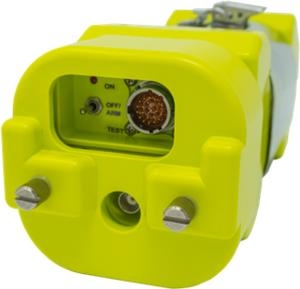Tue, Aug 28, 2018
Agency Recorded More Than 8,700 Such Alerts In 2017
The FAA has published in Information For Operators (InFO) focused on the issue of ELT false alerts. It also provides recommendations and additional information for the prevention of false alerts.

In 2017, ELTs generated 8,786 false alerts in the United States. The majority of 406 MHz ELT false alerts occur during testing and maintenance.
A false alert is a non-distress activation of a 406 MHz emergency beacon (either an ELT, Personal Locator Beacon [PLB], or Emergency Position-Indicating Radio Beacon [EPIRB] for maritime use). It can be caused by accidental activation during testing, mishandling, improper installation, or unfamiliarity with beacon operation. Search and Rescue (SAR) personnel respond immediately to every activation of a 406 MHz SAR Satellite-Aided Tracking (SARSAT) beacon. This response will stop only when it has been proven that the activation was a false alert. Because of this, every false alert has the potential to put rescuers in harm’s way and waste valuable resources. A method to help save time and resources for SAR personnel is to have a registered ELT.
The simplest and quickest way for SAR personnel to confirm a false alert is to place a phone call to the person to whom the ELT is registered. They do this using the information provided by the beacon owner in the National Oceanic and Atmospheric Administration (NOAA) SARSAT Beacon Registration Database system.
Aircraft operators and pilots should familiarize themselves with the information contained in this InFO. In addition, to help prevent false alerts, aircraft operators, and pilots should consider the following:
- Ensure that ELT self-tests and annual tests are conducted according to the manufacturer’s instructions.
- Register ELTs at www.beaconregistration.noaa.gov. Keep contact information up to date after registration.
- If the ELT is accidently activated, cancel the false alert by calling the U.S. Air Force Rescue Coordination Center at 1-800-851-3051 or the nearest Federal Aviation Administration Air Traffic facility and provide the beacon’s hex ID.
(Image from file)
More News
Aero Linx: Model Aeronautical Association of Australia MAAA clubs are about fun flying, camaraderie and community. For over 75 years, the MAAA has been Australia’s largest fl>[...]
Touchdown Zone Lighting Two rows of transverse light bars located symmetrically about the runway centerline normally at 100 foot intervals. The basic system extends 3,000 feet alon>[...]
“Discovery and innovation are central to our mission at Virgin Galactic. We’re excited to build on our successful record of facilitating scientific experiments in subor>[...]
How To Get A Story On Aero-TV News/Feature Programming How do I submit a story idea or lead to Aero-TV? If you would like to submit a story idea or lead, please contact Jim Campbel>[...]
Student Pilot Reported That During Rotation, “All Of A Sudden The Back Of The Plane Kicked To The Right..." Analysis: The student pilot reported that during rotation, “>[...]
 ANN's Daily Aero-Linx (05.02.24)
ANN's Daily Aero-Linx (05.02.24) ANN's Daily Aero-Term (05.02.24): Touchdown Zone Lighting
ANN's Daily Aero-Term (05.02.24): Touchdown Zone Lighting Aero-News: Quote of the Day (05.02.24)
Aero-News: Quote of the Day (05.02.24) ANN FAQ: Contributing To Aero-TV
ANN FAQ: Contributing To Aero-TV NTSB Final Report: Cirrus Design Corp SR20
NTSB Final Report: Cirrus Design Corp SR20



